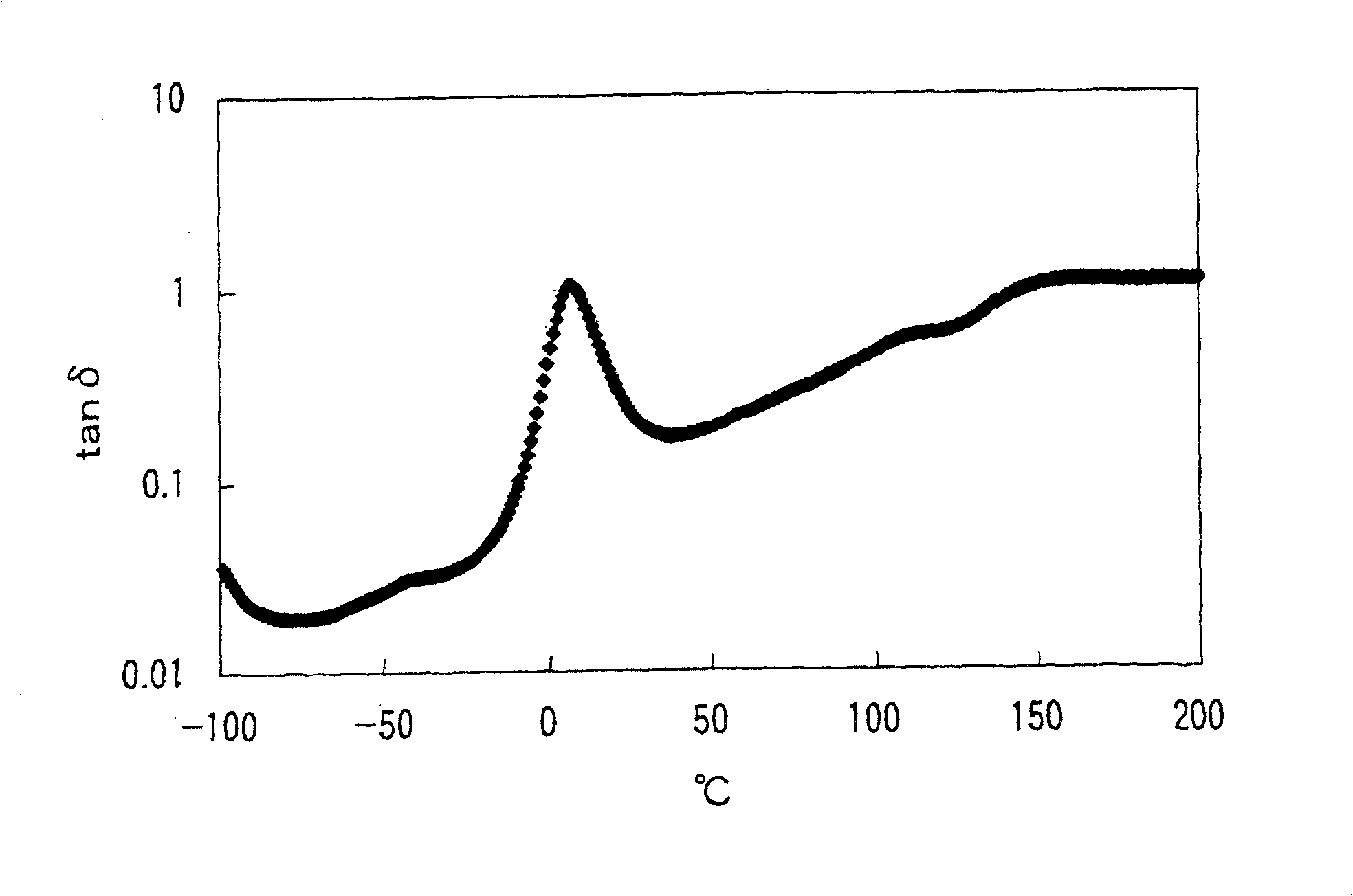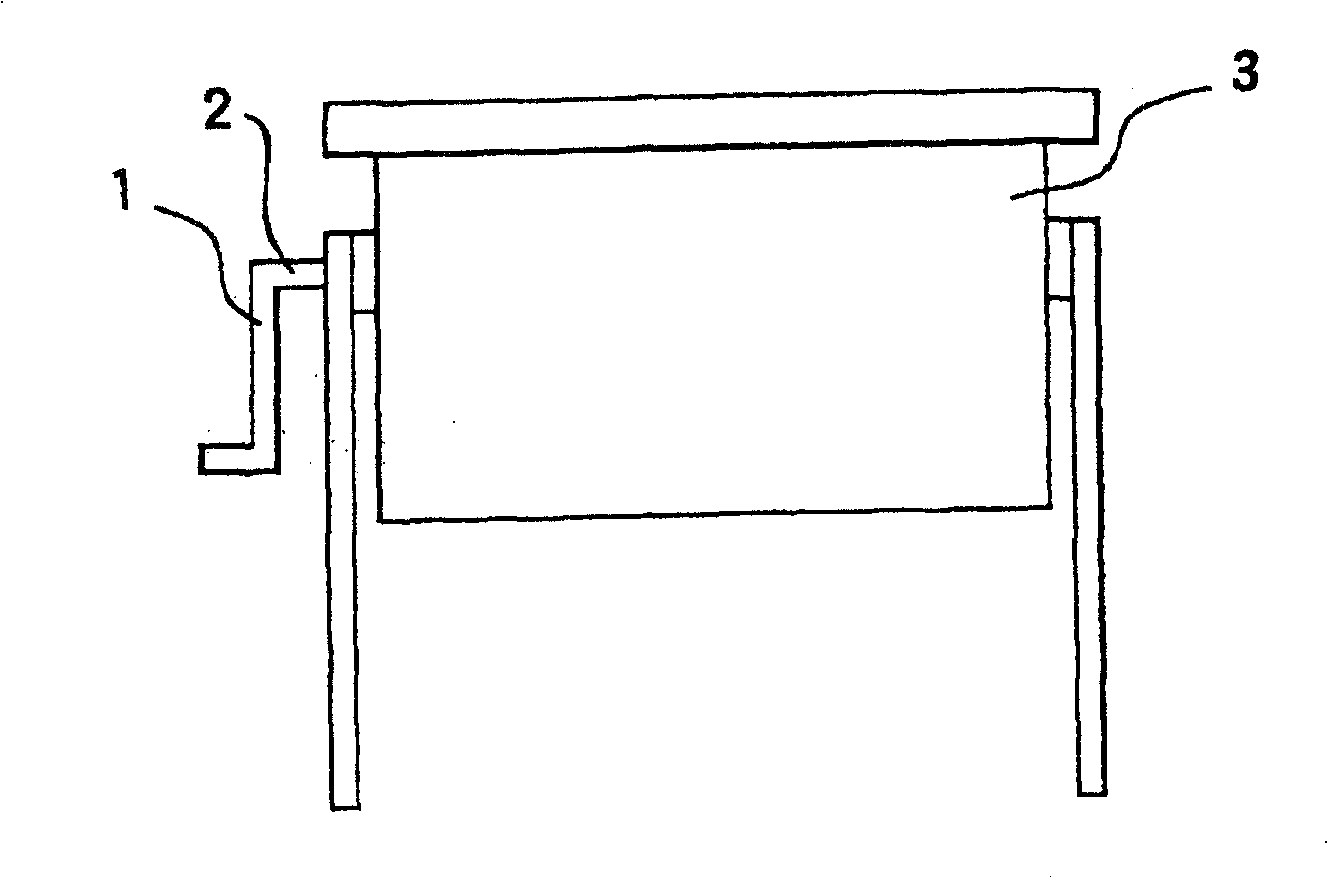Hydrogenated copolymer
A technology of hydrogenated copolymers and copolymers, applied in the field of hydrogenated copolymers, can solve the problems of lack of flexibility, unsuitability for soft vinyl chloride resins, and not yet produced
- Summary
- Abstract
- Description
- Claims
- Application Information
AI Technical Summary
Problems solved by technology
Method used
Image
Examples
reference example 1
[0304]
[0305] In the following examples and comparative examples, non-hydrogenated copolymers and hydrogenation catalysts for hydrogenation of non-hydrogenated copolymers were prepared by the following methods.
[0306] Put 1 liter of dry and refined cyclohexane into a reaction vessel replaced with nitrogen, add 100 mmoles of bis(η 5 -cyclopentadienyl)titanium dichloride. While fully stirring the mixture in the reaction vessel, a n-hexane solution containing 200 mmol of trimethylaluminum was added thereto, and reacted at room temperature for about 3 days to prepare a titanium-containing hydrogenation catalyst.
Embodiment 1
[0308] Continuous polymerization of the non-hydrogenated copolymer was carried out by the following method using two tank reactors with a stirring device and a jacket having an internal volume of 10 liters.
[0309]To the bottom of the first reactor, a cyclohexane solution with a butadiene concentration of 24% by weight was supplied at 4.51 liters / hr, a cyclohexane solution with a styrene concentration of 24% by weight was supplied at 5.97 liters / hr, and a cyclohexane solution with a styrene concentration of 2.0 Liter / hr supplies the cyclohexane solution of n-butyllithium, the concentration of the cyclohexane solution of n-butyllithium is adjusted so that, per 100 parts by weight of monomer (total amount of butadiene and styrene), n-butyl The amount of base lithium is 0.077 parts by weight, and then supply the cyclohexane solution of N, N, N', N'-tetramethylethylenediamine, the supply rate is, relative to every 1 mole of n-butyllithium, N, The amount of N,N',N'-tetramethylethy...
Embodiment 2
[0315] In addition to changing the supply rate of the butadiene solution supplied to the first station to 3.38 liters / hr and the supply rate of the styrene solution to 6.87 liters / hr, the supply rate of the styrene solution supplied to the second station was changed to 2.95 liters / hr hr, continuous polymerization was carried out in the same manner as in Example 1 to obtain a non-hydrogenated copolymer. Subsequently, a hydrogenation reaction was carried out in the same manner as in Example 1 to obtain a hydrogenated copolymer (Polymer-2). The properties of Polymer-2 are shown in Table 1.
PUM
| Property | Measurement | Unit |
|---|---|---|
| oil absorption | aaaaa | aaaaa |
| thickness | aaaaa | aaaaa |
| thickness | aaaaa | aaaaa |
Abstract
Description
Claims
Application Information
 Login to View More
Login to View More - R&D Engineer
- R&D Manager
- IP Professional
- Industry Leading Data Capabilities
- Powerful AI technology
- Patent DNA Extraction
Browse by: Latest US Patents, China's latest patents, Technical Efficacy Thesaurus, Application Domain, Technology Topic, Popular Technical Reports.
© 2024 PatSnap. All rights reserved.Legal|Privacy policy|Modern Slavery Act Transparency Statement|Sitemap|About US| Contact US: help@patsnap.com










